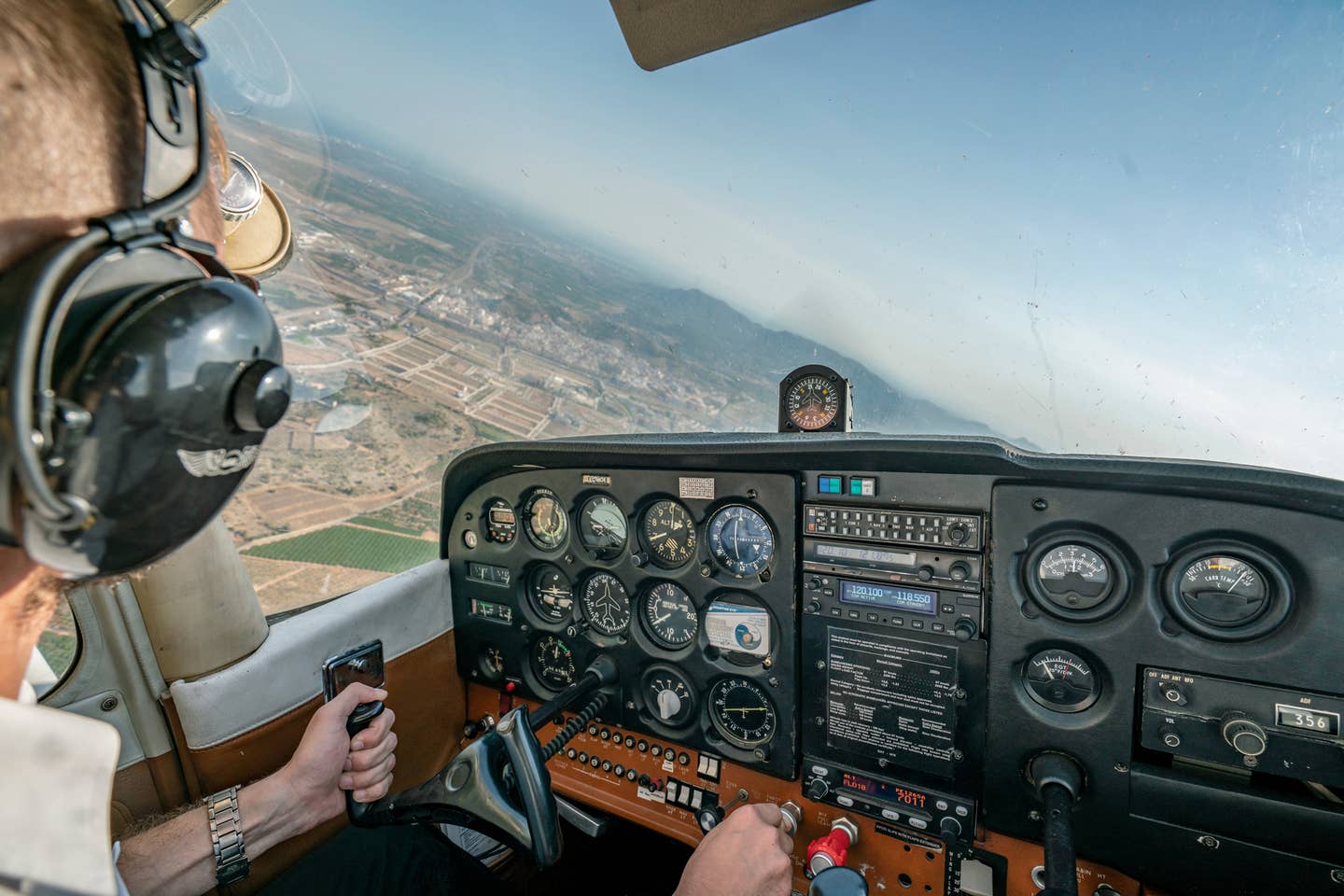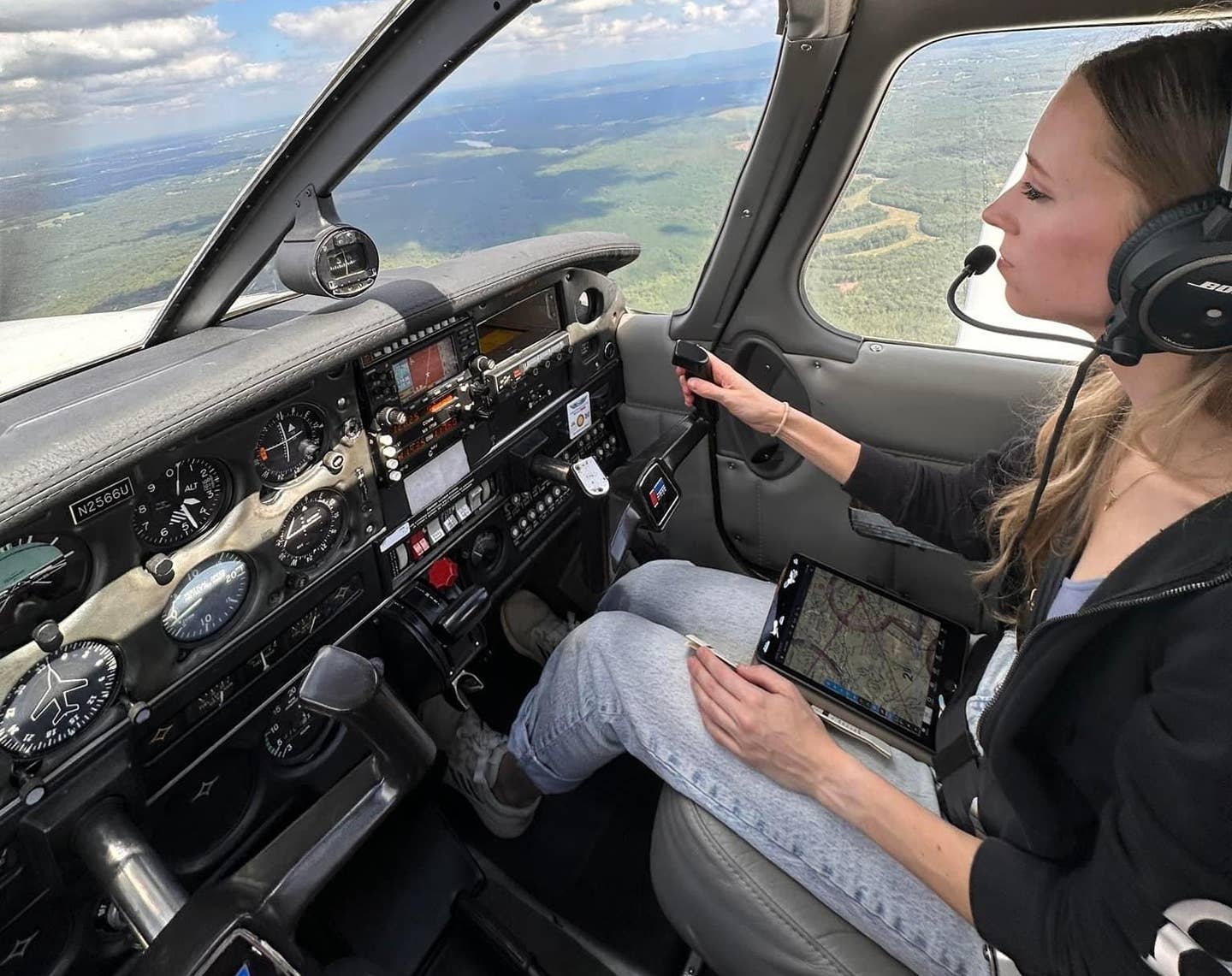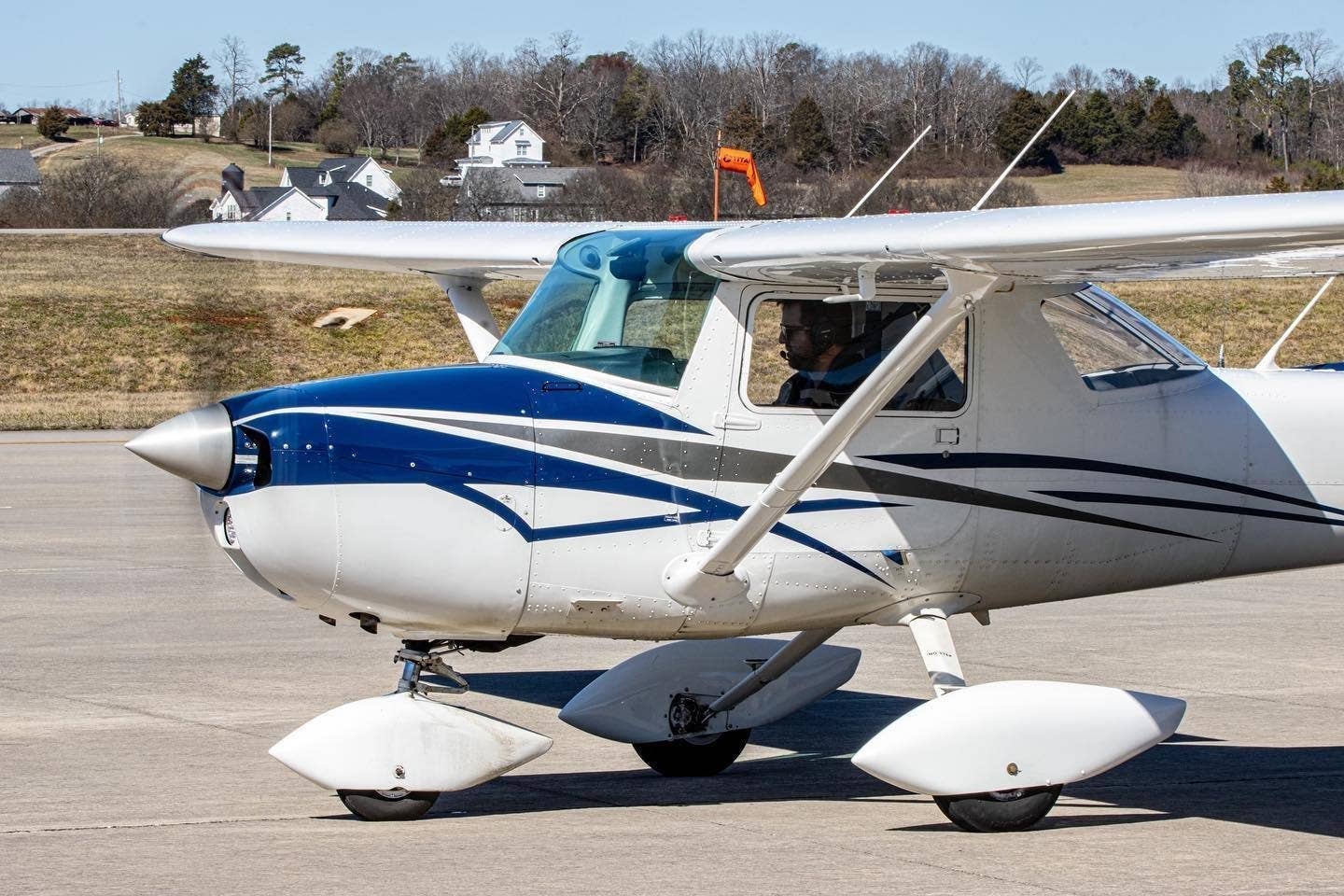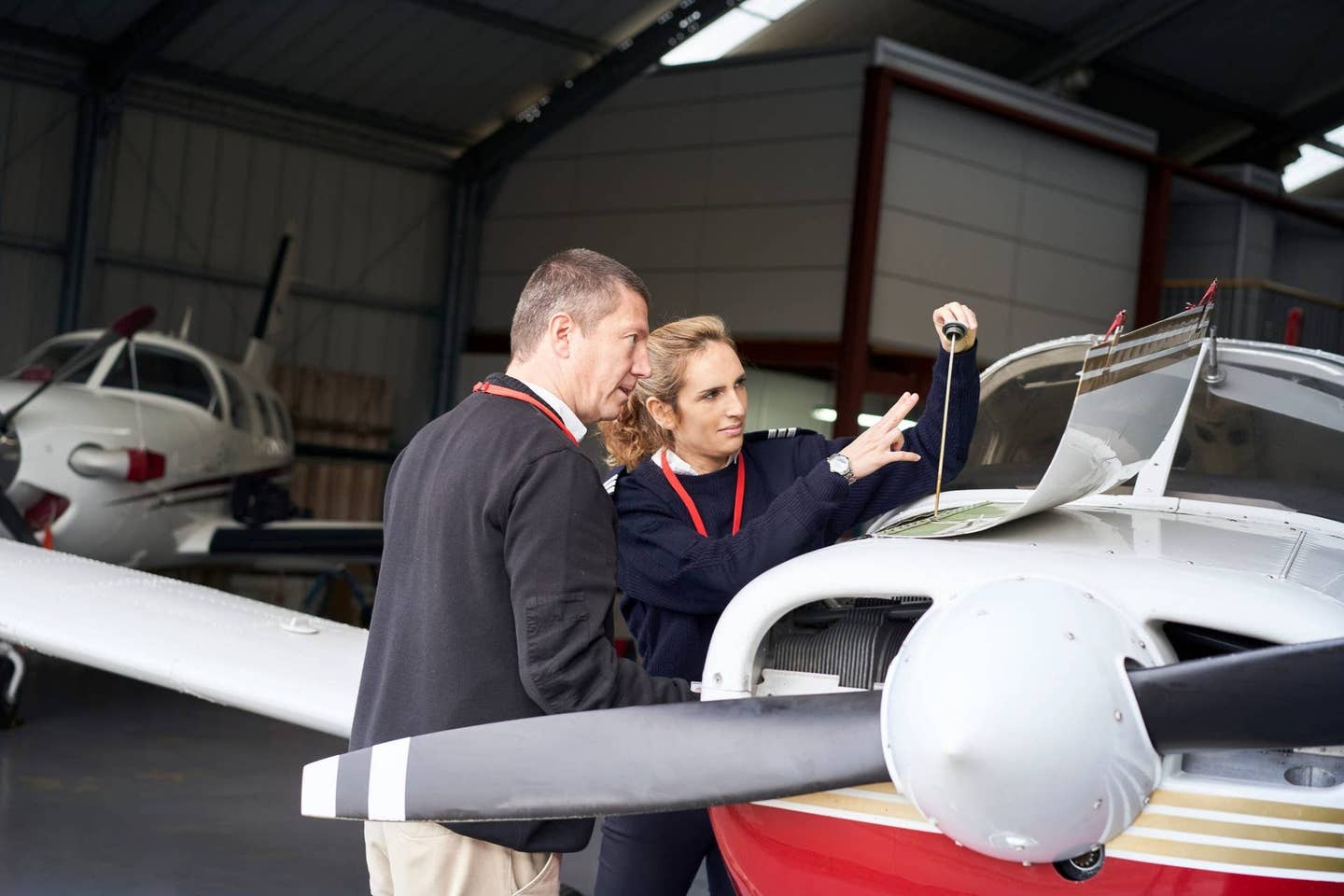Caring For Your Aircraft
Part V: Understanding your aircraft’s battery is simple, useful and important
 |
The aircraft battery is a seldom-noticed and somewhat-ignored component of the machine's life-giving systems. In past articles, we've discussed the aircraft's ignition system, and noted that it doesn't require a battery; the engine runs just fine with its magnetos creating the electrical pulses necessary to make the cylinders fire. But because few of us hand-prop airplanes any more, and because of our increased reliance on electronics and technology in the cockpit, the battery has become the star of the show in modern aircraft.
Our batteries---and in fact all batteries---essentially are energy-storage modules. In our aircraft, we rely on the battery to store enough energy, so when we turn the ignition key, there's enough power to turn the starter, which turns the propeller and creates that initial spark that ignites the fuel-air mixture in the cylinders. Once the engine is firing on its own, the battery provides power to all the aircraft's electronics, like radios, glass-panel displays, GPS units and the zillion other things in the aircraft that run on electricity.
Most think the battery's job is done once the engine has started, since the alternator is now engaged by the turning engine and constantly feeds power to the battery and other electrical components. While that's true, the battery still exists to provide emergency power in the event of an alternator failure. Anyone who has experienced an alternator failure at night knows the value of a well-charged battery.
Lead-Acid Batteries
Most of us are flying around with lead-acid batteries. While it's true that most electronics have moved to nickel-cadmium, and more recently, Li-Ion technology, general aviation has stayed with lead acid for a number of reasons, including ease of maintenance and low cost. Lead-acid technology is robust, proven, and---like the lowly magneto---reliable. The technology is simple.
Lead-acid aircraft batteries contain six or 12 "flooded" lead-acid cells connected in a series to make a 12-volt or 24-volt battery (each cell is nominally rated at 2V). The cells are encased in a plastic container equipped with electrical terminals (or sometimes a receptacle for mating to the aircraft). Each cell consists of positive plates made of lead dioxide and negative plates made of spongy lead (a form of metallic lead). The "flooded" part refers to the electrolyte that fills each cell, made of sulfuric acid and water.
The positive and negative plates are separated by layers of polyethylene to prevent the plates from shorting together. Electrons flow from the negative plate, out the battery terminal to whatever electrical component is being powered, then back through the positive plate. The electrons leaving the negative plate cause an oxidation reaction that converts the spongy lead into lead sulfate. The gathering of electrons at the positive plate causes a chemical reaction that converts the lead dioxide into lead sulfate. The whole process continues until most of each plate is converted to lead sulfate and the battery is fully discharged.
Meanwhile, the engine is turning the alternator, which sends an electrical charge back to the battery, keeping it from discharging completely. During the charging process, current is passed through the cells in the reverse direction. The reverse current causes a reverse of the chemical reaction, returning the positive plates to lead dioxide and the negative plates to spongy lead. When this process is complete, the battery is fully charged.
The biggest changes in battery technology have been in materials. Janak Rajpara, Director of Engineering for Teledyne/Gill (makers of Gill aircraft batteries) says, "The alloy composition between 1940 and now has significantly improved." Rajpara says the aviation community is very price sensitive, and lead-acid batteries still provide the best price for performance. "Also, lead-acid batteries are 95% recyclable," adds Rajpara, "which is important in our environmentally conscious world."
Help Your Batteries Last Longer
Armed with knowledge, there are things pilots can do to help their batteries last longer. "I've seen customers bring in batteries that have been flying for over 10 years," says Rajpara. He explains that the battery's biggest enemy is high temperature and excessive discharge. "Pilots shouldn't let a battery stay in a state of excessive discharge for too long. The key thing is to keep a battery charged and never to let it discharge severely." Rajpara also suggests keeping your battery clean, and adding distilled water to nonsealed batteries. "You use distilled water because it has no dissolved solids to create competing chemical reactions."
Skip Koss, Vice President of Marketing for Concorde Battery talked to us about the negative effects of "parasitic drain" on battery life. Parasitic drain refers to an electrical load that takes power from the battery even when the master switch or battery switch is off. Examples of components that cause parasitic drain are clocks, relays, lights and power-monitoring circuits, among others. These components will cause a slow drain of the aircraft's battery in weeks or days---when the aircraft isn't operated often. "Ultimately, a parasitic drain will cause the battery plates to sulfate," says Koss. "Sulfated plates make the battery harder to recharge and, over time, can lead to a battery that's no longer airworthy or will fail prematurely."
Koss explains that one danger is a battery that can still start the engine but doesn't have enough energy reserve in the event of an emergency. That battery won't cause a pilot to notice anything unusual. Koss recommends measuring the parasitic drain on your particular battery using a standard digital multimeter. Procedures for this are published for free by Concorde Battery at www.concordebattery.com/otherpdf/tb10.pdf.
High temperature is another enemy of aircraft batteries. Janak Rajpara says the "danger zone" is anything over 110-120 degrees F, common during the summer months in western states. "At that point, the battery starts discharging very quickly," he says. Long idles while running a lot of electronic components will quickly deplete your battery in those conditions. "If you want your battery to last longer, you need to keep it cool," he suggests.
During winter months, having your battery tested is a good idea. Cold weather slows down the chemical reaction necessary to produce electricity in your battery. Also, cold batteries resist being charged. The amount of cranking power available from a cold battery is half of that available in a warm battery, because less current is produced due to the slowed-down chemical reaction. Several consumer-use units are available to test, maintain and charge your aircraft battery, or you can have it done by an aircraft mechanic.
As far as the future of batteries, both Concorde and Teledyne tell us that new material formulations are being looked at, and both nickel-cadmium and Li-Ion technologies are being developed further. The high-power Li-Ion battery shows promise---delivering superior life, half the weight and recharge in a fraction of the time it now takes for lead-acid and nickel-cadmium batteries. Concorde says another advantage of Li-Ion is that the battery has no "memory," and no scheduled cycling is required to prolong the battery's life. In addition, the self discharge is less than half compared to nickel cadmium. Teledyne is working on chargers that are more efficient and can resurrect a battery that has been discharged for a long time.
Even in the battery world, the trick is balancing the benefits of the technology with the cost to aircraft operators. New technologies aren't as inexpensive as what we have today, and it remains to be seen where batteries will go in aviation. So, think about your humble battery next time you look at that ammeter during your run-up. Consider the work it has to do and what you as a pilot can do to keep it---and your entire electrical system---happy and functioning.

Subscribe to Our Newsletter
Get the latest Plane & Pilot Magazine stories delivered directly to your inbox






